Whatapp:
+278.3675.0634
Work Hours
Monday to Friday: 7AM - 7PM
Weekend: 10AM - 5PM
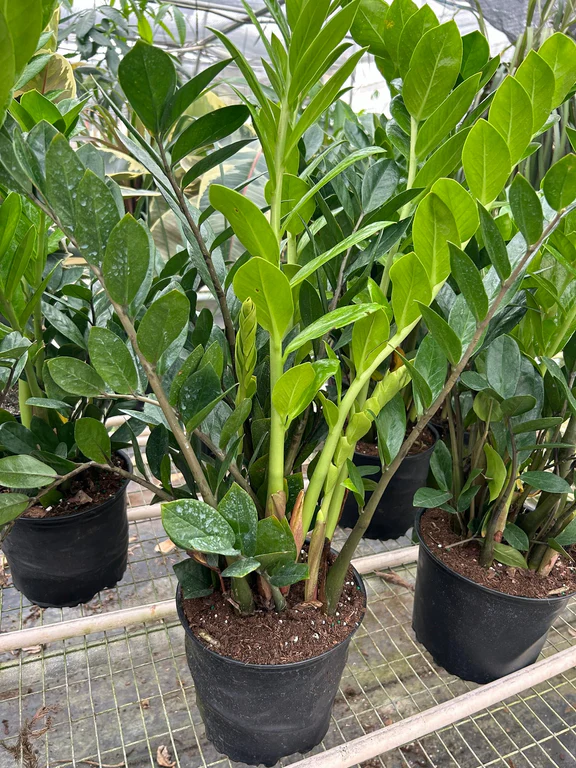
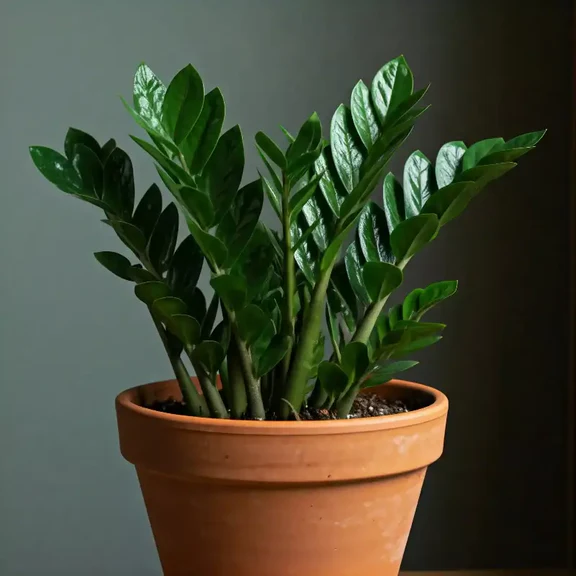
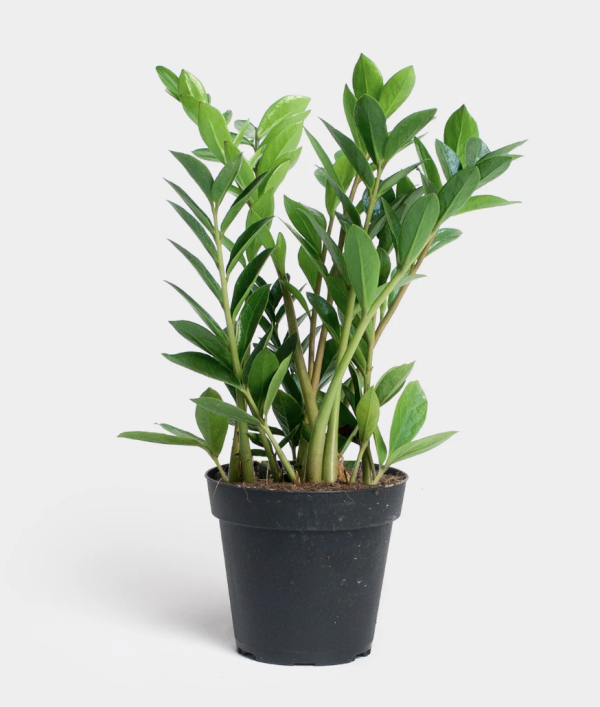
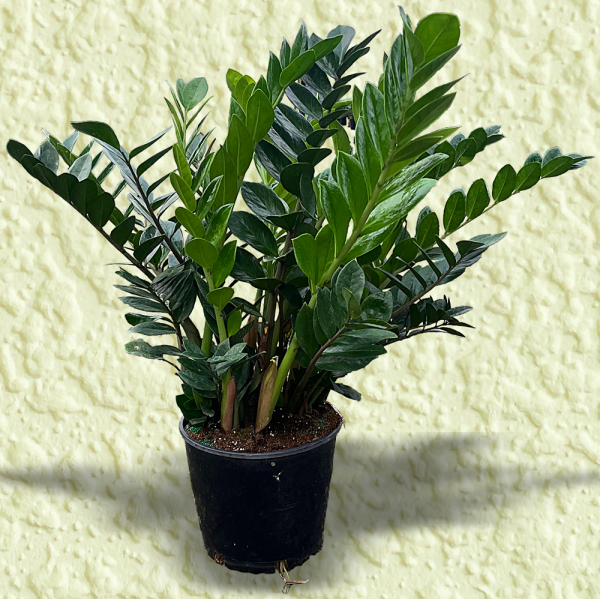
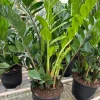
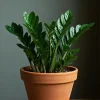
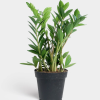

Price range: $25.00 through $75.00
ZZ Plant (Eternity Plant) , also known as the Eternity Plant, Zanzibar Gem, or Zamioculcas zamiifolia, is a hardy, low-maintenance houseplant
Zamioculcas zamiifolia (pronounced zam-ee-oh-KUL-kass zam-ee-FOH-lee-uh)
ZZ plant, zuzu plant, eternity plant, aroid palm, Zanzibar gem
East Africa
Herbaceous perennial
Slow
2 to 3 feet tall
Thick, waxy, pinnate leaflets range in length from 3 to 5 inches and grow alternately along the stem. Leaf color is typically dark green but can vary depending on the cultivar. (ZZ Plant (Eternity Plant) )
Although primarily a foliage plant, ZZ plant may occasionally produce flowers in the form of cream-colored spadices, similar to those of the peace lily. The flowers are small and usually hidden under the base of the leaves.
All parts of the plant are toxic if consumed. Keep out of reach of children and pets. Also wear gloves when handling to avoid skin irritation.

Low to bright indirect light, such as from a north-, east-, or west-facing window. Avoid direct sunlight, which can scorch the leaves. No windows? No problem. ZZ plant also grows well under fluorescent lighting.
Indoors, grow at average room temperatures of 60 to 75 degrees F. If you put your plant outdoors during the summer, be sure to bring it back inside if temperatures fall below 50 degrees F.(ZZ Plant (Eternity Plant))
Average household humidity levels are fine, but avoid placing your plant near air conditioning and heating vents, which could dry out the air and cause browning of the leaves.
Use a well-draining potting mix that includes perlite
One of the rare ways you can kill a ZZ plant is by overwatering. During the active growing season (spring through early fall), only water every two weeks or when the top inch or two of soil feels dry. Water less frequently during the winter months or if growing your plant under low-light conditions.
Because ZZ plants can store nutrients in their roots, they don’t need frequent fertilization. Feed every month or so during spring and summer using an all-purpose houseplant fertilizer diluted to half the recommended rate. Do not fertilize in winter.

To keep the foliage nice and shiny, clean with a damp cloth as needed to remove dust. Misting the leaves occasionally will also reduce dust buildup. Keeping your plant dust-free is good for its health too, because the leaves will be able take in more sunlight.
Since ZZ plant is a slow grower and doesn’t mind living in cramped quarters, you don’t need to repot it often. If you want to keep your plant the same size, repot it every two years or so to refresh the soil and improve drainage, putting it back in the same container after trimming away overgrown roots and stems.
If you want your plant to grow larger, put it in a new pot 1 to 2 inches in diameter wider than the current one. Because ZZ plant’s rhizomes spread laterally, its width is controlled by the diameter of the pot.
Pruning a ZZ plant won’t encourage new growth as with most other houseplants, but sometimes it’s necessary to improve the shape of your plant and to remove yellowing or damaged foliage.
If your plant is overgrown, you can remove entire stalks by cutting them away at the base with a sharp knife or pruning scissors. Be sure to wear gloves to avoid skin contact.
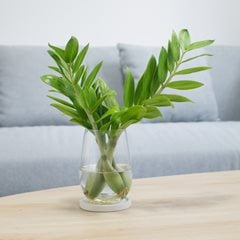
ZZ plants can be propagated three ways:
Usually a sign of overwatering, especially if the stalks are turning brown and mushy. Prune off the damage and wait until your plant dries out before watering again. You may also need to change the soil and repot your plant to prevent root rot. (ZZ Plant (Eternity Plant))
Probably due to low humidity, underwatering, or exposure to bright sunlight. Move your plant to a location that receives indirect light, and if the air is dry, mist the leaves occasionally.
Overwatering is the most common cause, resulting in waterlogged roots that can no longer provide good support. Your plant may also be seeking more light. Try moving it closer to a window or grow under fluorescent lighting or LED grow lights.
ZZ plants are generally pest-free but may occasionally be bothered by mealybugs, scale, aphids, and spider mites. Good treatments for getting rid of these insects include washing the leaves with an insecticidal soap and applying organic neem oil. (See more on common houseplant pests.)
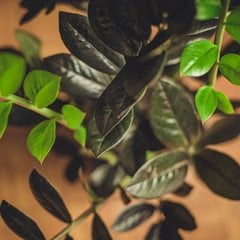
ln addition to the classic ZZ plant, there are several great cultivars worth seeking out. If you can’t find them at a local garden center, many online nurseries will carry them.
One of the newest ZZ varieties and one of the most dramatic, with leaves that emerge a bright lime-green color and gradually turn a deep purple, almost black shade as they mature.
Has green foliage enhanced by splashes of creamy white. Variegation is less pronounced if the plant is grown under low-light conditions.
A dwarf version that grows slightly smaller (under 2 feet in height) with a more slender leaf shape.
Another dwarf variety (no taller than 15 inches) with smaller, slightly c.urled leaves.
| Sizes | Small, medium, Large |
|---|
Reviews
There are no reviews yet.